Opinion & Analysis
Statistics that make a great Ryder Cup player and the 2014 U.S. Team standings
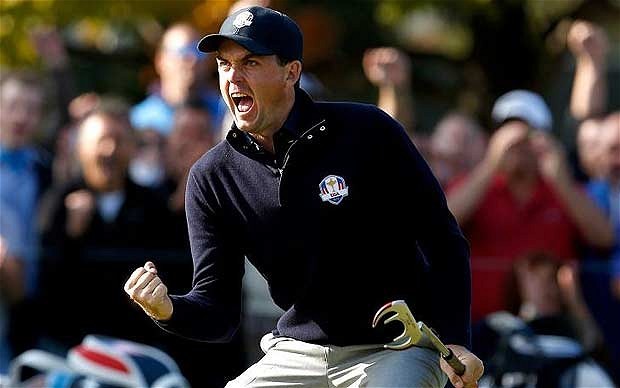
With the Ryder Cup upon us this year, I want to look at the status of the U.S. team from a statistical perspective throughout the season leading up to the event. The U.S. team will have Tom Watson as its captain with four of the 12 members being appointed by Watson. The other eight players will make the team based on points earned.
With that said, what makes for a good Ryder Cup player? This was one of the first things I examined as best as I could since most statistical data prior to 2004 is limited. In the end, I found that there were two player attributes that work very well in the Ryder Cup: a great short game from less than 20 yards around green and good putting.
Look at many of the great all-time Ryder Cup players and they tend to have this common trait: Nick Faldo, Seve Ballesteros, Ian Poulter, Luke Donald, Jose Maria Olazabal, Billy Casper, Larry Nelson, Bernhard Langer and Arnold Palmer. I don’t think anything changes the momentum in a Ryder Cup match than a player who can get his team out of trouble and save crucial pars when the other team thinks it has the hole won.
Great iron play is a player attribute that is a bit less common than a great short game, but there have been plenty of great Ryder Cupper known for their precise iron play. Think of golfers like Colin Montgomerie, Sergio Garcia, Lanny Wadkins and Lee Trevino. They were all great iron players, but they weren’t nearly as good at the other parts of the game.
What makes a good fourball pairing?
Fourball is often referred to as “best ball.” This is where the best score between two players on one team is matched against the best score between two players on the other team. All of the data concludes that the best fourball players make a lot of birdies. This is why Jim Furyk has struggled in the fourball pairings; he typically ranks low on the PGA Tour in birdie percentage.
I feel the best way to pair a fourball team is to look at the players who make a high percentage of birdies, and to pair them up based on their performance on par-3’s, par-4’s and par-5’s. For instance, if both players make a lot of birdies but only play the par-4’s well, they are likely to have difficulty winning the par-3’s and par-5’s. With that said, a captain should value par-4 play the most because there are nearly 2.5 times more par-4’s on the course than the par-3’s or par-5’s.
One of my all-time favorite pairings was J.B. Holmes and Boo Weekley in 2008. Weekley is one of the premier drivers on Tour and would tee off first. He was routinely blasting it 20 yards past Lee Westwood and still finding the fairway. When Weekley would find the fairway, that allowed Holmes to have a free rip at the ball and often times he would hit it 380 yards. If he was playable, he increased his odds of winning the hole outright. If it wasn’t, the steady ball striking of Weekley would still mean that the team had a good chance to win or tie the hole. After the front nine you could see Westwood was visibly frustrated playing the pair.
What make a good foursome pairing?
Foursome play is often referred to as “alternate shot.” Unlike the fourball play, the better players tend to be better at avoiding bogies than making birdies. Historical trends also show that the better foursome format players tend to be very good short game players around the green. Mistakes are going to be made in the foursome format and it helps to have players who can counter those mistakes and end up avoiding bogies.
It is vital for the captain to pair players based on their strengths and weaknesses as well. For instance, a poor pairing would be something like Phil Mickelson and Zach Johnson. Johnson does not play well from the rough and Mickelson struggles to find the fairway. That’s why Johnson and Jason Dufner worked so well at Medinah. Dufner was one of the most effective drivers of the ball in the world at the time, and hit a lot of fairways. That played right into one of Johnson’s strengths of hitting shots from the fairway. And that year Dufner was one of the premier iron players from longer than 150 yards and had a great year with his short game.
Versatility, youth and experience
One of the key components to fielding a team is that the captain should favor player versatility and youth over experience. A captain should look for players who can be effective in both the fourball and foursome formats. If a player struggles badly in the Friday morning foursome matches, the captain may need to sit that player until the Sunday individual matches. And that will require the captain to find a replacement for that player in the Saturday foursome matches. The more versatile the roster is, the more options the captain has and the more the captain can hide the players who are playing poorly.
This leads us to the players who continually make the Ryder Cup based on their experience instead of their performance. We see this every Ryder Cup from the U.S. team. The captain ends up picking a player who usually has a poor Ryder Cup record, but has ample experience. In my opinion, that thinking is tragically flawed because it tells us that the player has experience at underperforming at the Ryder Cup. There are always players who never get that chance at the Ryder Cup, and we are left wondering how they would have performed if they were given the opportunity. But here we have certain players who have been given the opportunity to play in the Ryder Cup and we know that they will perform poorly.
Often times it is not the player’s fault. For instance, Davis Love III caught a lot of flak for making Jim Furyk a captain’s pick. Furyk played brilliantly in all of 2012 and actually played quite well at the Ryder Cup. His playing partner, Brandt Snedeker, played poorly and cost him a match with what was thought of as Europe’s best team in Rory McIlroy and Graeme McDowell. And Furyk was within a small fraction of halving his match with Sergio Garcia. The issue with Furyk is that he is not a versatile player. He is only good for the foursome format and given his age, Love had to limit the matches he could play in order to keep him fresh. So if Furyk came out on fire, the captain can’t use him in the rest of the matches in fear of burning him out.
Here’s a look at the top-12 U.S. players in Ryder Cup points so far (accurate as of 9/10/14), as well as a breakdown of their strengths and potential best pairings.
1. Phil Mickelson
Mickelson’s getting up there in age, but he has developed a game that is more versatile for Ryder Cup play. He is usually best suited for fourball, but with his vast improvement in his putting since working with Dave Stockton he has made himself a much better Foursome player if he is paired with a player who can hit difficult shots out of the rough like Keegan Bradley or Bubba Watson. However, Watson is a weak putter and short game player and would not likely make a good foursome player.
So there are some limitations on what Phil can do given his age and style of play, but he is likely more effective of a Ryder Cup player than any other time in his career. Mickelson’s issues always come down to his driver, but he has actually struck the ball well off the tee so far this year.
2. Jason Dufner
If Dufner regains his 2012 form where he was an elite driver, iron player and short game artist, he is nearly ideal as a Ryder Cup player because he can play in either format with just about any type of player and make their job quite easy. Dufner’s iron play dropped off quite a bit in 2013 and then picked up before the PGA Championship. He’s never been a great putter, but if the rest of his game is like it was in 2012 then Watson should be able to work around it.
3. Dustin Johnson
For a bomber, Johnson is quite versatile because he has shown the ability to perform well in numerous parts of the game. For example, he ranked 12th in short game play in 2013. Johnson is still best suited for fourball given his ability to make birdies, and he performs extremely well on the par-3’s and par-5’s. He is one of those players that could get hot early on and Captain Watson could ride out for the rest of the tournament.
4. Ryan Moore
Moore is ranked 4th because of the start to his 2013-2014 season, as his 2013 season was not overly impressive. He tends to make more birdies than bogeys, and driving is typically the strength of his game. I think he is best suited for the fourball format with a golfer that can really bomb it off the tee and plays the par-3’s well (i.e. Dustin Johnson). I would have Moore tee off first and get his drive out there. If he executes, then let the bomber get a free rip at the ball. I am remain skeptical, however, that Moore can continue this pace and earn a spot on the U.S. team.
5. Harris English
English is only in his 2nd season on Tour so I have limited data on his game. He ranked 17th in Birdie Percentage in 2013, and was very good on the par-4’s and par-5’s. He is also a great putter (14th in Putts Gained in 2013) and a good driver of the ball. His iron play and short game will have to improve this year in order to consider him for the foursome format. For now, he is clearly a favorite for the fourball format and I would probably try to pair him with a strong par-3 and par-4 player (i.e. Dustin Johnson, Jason Dufner, Phil Mickelson, etc).
6. Webb Simpson
Simpson had two very different years in terms of ballstriking in 2012 and 2013. In 2012, he was arguably the best iron player in the world, particularly from the fairway, but he struggled mightily off the tee. In 2013 he drove it fairly well (67th in Driving Effectiveness), but regressed into an above average iron player. He only ranked 77th on iron shots from the fairway.
Meanwhile, his putting and short game remained quite steady, being very good in both areas of the game. He is excellent at the par-3’s, par-4’s and par-5’s and is better at making birdies than bogeys, but ranks well in both categories. This makes for a versatile player, but he is better suited for fourball. I liked his pairing with Bubba Watson in the fourball in 2012, but not in the foursome format. It’s really going to depend on what style of play shows up for Simpson in 2014.
In 2012, the simulations favored Simpson playing with Jason Dufner in the foursome format. If the Ryder Cup was held in 2013, Brandt Snedeker would have been the most favorable partner for Simpson in the foursome format.
7. Jimmy Walker
Walker has been putting extremely well in the 2013-2014 season, which has led to his current ranking in Ryder Cup points. He hits it very long, but he was a mediocre driver of the ball last year (155th in Driving Effectiveness). He was also mediocre on iron shots from the fairway (124th), but excellent from the rough (16th). Walker ranked 26th in both Birdie Percentage and Bogey Avoidance and played the par-4’s and par-5’s very well. This leads me to believe at this moment he is not very versatile as a Ryder Cup player and is mostly suited for the fourball format.
I would pair Walker with a player that can play the par-3’s well like Dustin Johnson or Webb Simpson. If I had to put him in the foursome format, I would look for a long, but effective driver of the ball: someone who can hit it long so that it can make up for Walker’s weak iron play. And a player that has a good enough short game to clean up any of Walker’s misses. Dustin Johnson appears to be an ideal partner in this format.
8. Chris Kirk
Kirk has the makings of a breakout star if he makes the Ryder Cup. Just take a look at these rankings in key metrics in 2013:
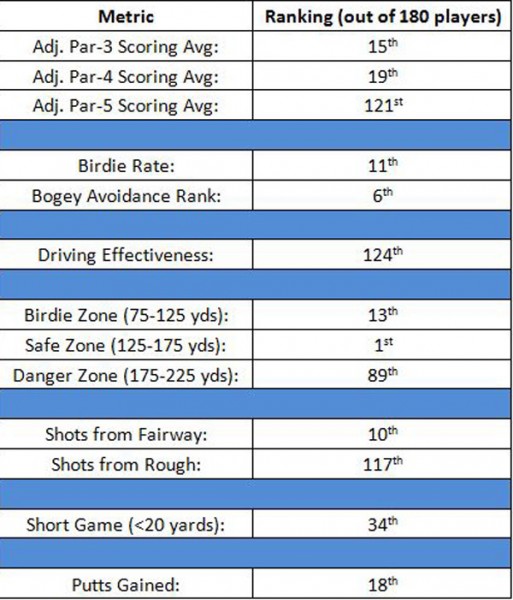
Kirk would be best suited for fourball given his ability on the par-3’s and par-4’s, as well as his ability to make a lot of birdies. He would just need to be paired with a great par-5 player like Bubba Watson, Phil Mickelson, Tiger Woods or Keegan Bradley.
Kirk could fit into the foursome format if he is paired with the right player. He will need a partner who drives it effectively while keeping the ball in the fairway. That will play right into Kirk’s strength of hitting iron shots from the fairway. And the longer and more accurate the golfer, the better it works for Kirk since he is so good from inside 175 yards. My simulations show that Kirk would work nicely with Keegan Bradley, Jordan Speith, Webb Simpson and Kevin Streelman.
9. Jim Furyk
Keep him out of the fourball format and you’re pretty much fine. I would also pair him with an accurate driver of the ball as hitting out of the rough is not one of Furyk’s specialties, as well as a golfer who hits it well from 175-or-more yards given Furyk’s lack of distance off the tee. Zach Johnson would be a nice pairing. The same goes for Jordan Spieth and Steve Stricker.
10. Jason Bohn
Bohn is a longshot to make the team, and is on this list based on his play at the Shriners Hospital For Children Open and OHL Classic at Mayakoba. He also turns 41 years old in April.
His strength has always been his iron play from inside 175 yards, particularly from the fairway. He did rank 35th in Birdie Percentage last year, but ranked 119th in Bogey Avoidance. I think he’s best suited for the fourball format with a partner who makes a lot of birdies, but also does a great job of avoiding bogeys and plays the par-5’s very well. The numbers would favor Bohn being paired with Tiger, Stricker or Keegan Bradley in the fourball format.
In the foursome format, he would probably only work well with Bubba Watson because of Watson’s length and overall effectiveness off the tee. Bohn is an unlikely Ryder Cup candidate, but stranger things have happened.
11. Gary Woodland
Woodland seems to finally be getting his game to click. He’s a power player and was struggling to play towards that strength. However, he is likely relegated towards the fourball format because he is one of the worst short game players on Tour. And despite his power, he has never been a great player on the Par-5’s.
Woodland ranked 27th in Birdie Percentage and 92nd in Bogey Avoidance in 2013. So, he would best off with a high-birdie-rate player who can avoid bogeys and play the par-4’s and par-5’s well in the fourball format. Webb Simpson could be an excellent fit for him. If he were to play in the foursome format, it would be best to stick him with an excellent iron player — particularly from the rough — who can putt well to make up for Woodland’s struggles from around the green. Jordan Spieth, Phil Mickelson and Brandt Snedeker top the list as the most suitable teammate for Woodland in the foursome format.
12. Brian Stuard
Stuard recorded three top-6 finishes in a row and also had a T15 at the Shriners, which has earned him his top-12 ranking thus far. Stuard is 31 years old and not a long hitter, but he drives it effectively off the tee (68th in 2013) and putts pretty decently (79th in Putts Gained in 2013). He’s a very steady, Jim Furyk-type of player who ranked 23rd in Bogey Avoidance and 138th in Birdie Percentage. This means that if he were to make the Ryder Cup, he would fit more into the foursome format and should avoid the fourball format at all costs.
Stuard would be best paired with a good iron player, particularly from the fairway to take advantage of his accurate driving and to avoid his need to scramble (Stuard was 131st in Short Game play in 2013). It would also help to have a partner who can find the fairway off the tee in order to help him with his below average iron play. Therefore, he would fit best with Furyk, Spieth, Tiger or Snedeker at this point in time.
Look for an update, Part 2 of this series, after the 2014 Masters!
- LIKE0
- LEGIT0
- WOW0
- LOL0
- IDHT0
- FLOP0
- OB0
- SHANK0
Opinion & Analysis
The Wedge Guy: What really makes a wedge work? Part 1

Of all the clubs in our bags, wedges are almost always the simplest in construction and, therefore, the easiest to analyze what might make one work differently from another if you know what to look for.
Wedges are a lot less mysterious than drivers, of course, as the major brands are working with a lot of “pixie dust” inside these modern marvels. That’s carrying over more to irons now, with so many new models featuring internal multi-material technologies, and almost all of them having a “badge” or insert in the back to allow more complex graphics while hiding the actual distribution of mass.
But when it comes to wedges, most on the market today are still single pieces of molded steel, either cast or forged into that shape. So, if you look closely at where the mass is distributed, it’s pretty clear how that wedge is going to perform.
To start, because of their wider soles, the majority of the mass of almost any wedge is along the bottom third of the clubhead. So, the best wedge shots are always those hit between the 2nd and 5th grooves so that more mass is directly behind that impact. Elite tour professionals practice incessantly to learn to do that consistently, wearing out a spot about the size of a penny right there. If impact moves higher than that, the face is dramatically thinner, so smash factor is compromised significantly, which reduces the overall distance the ball will fly.
Every one of us, tour players included, knows that maddening shot that we feel a bit high on the face and it doesn’t go anywhere, it’s not your fault.
If your wedges show a wear pattern the size of a silver dollar, and centered above the 3rd or 4th groove, you are not getting anywhere near the same performance from shot to shot. Robot testing proves impact even two to three grooves higher in the face can cause distance loss of up to 35 to 55 feet with modern ‘tour design’ wedges.
In addition, as impact moves above the center of mass, the golf club principle of gear effect causes the ball to fly higher with less spin. Think of modern drivers for a minute. The “holy grail” of driving is high launch and low spin, and the driver engineers are pulling out all stops to get the mass as low in the clubhead as possible to optimize this combination.
Where is all the mass in your wedges? Low. So, disregarding the higher lofts, wedges “want” to launch the ball high with low spin – exactly the opposite of what good wedge play requires penetrating ball flight with high spin.
While almost all major brand wedges have begun putting a tiny bit more thickness in the top portion of the clubhead, conventional and modern ‘tour design’ wedges perform pretty much like they always have. Elite players learn to hit those crisp, spinny penetrating wedge shots by spending lots of practice time learning to consistently make contact low in the face.
So, what about grooves and face texture?
Grooves on any club can only do so much, and no one has any material advantage here. The USGA tightly defines what we manufacturers can do with grooves and face texture, and modern manufacturing techniques allow all of us to push those limits ever closer. And we all do. End of story.
Then there’s the topic of bounce and grinds, the most complex and confusing part of the wedge formula. Many top brands offer a complex array of sole configurations, all of them admittedly specialized to a particular kind of lie or turf conditions, and/or a particular divot pattern.
But if you don’t play the same turf all the time, and make the same size divot on every swing, how would you ever figure this out?
The only way is to take any wedge you are considering and play it a few rounds, hitting all the shots you face and observing the results. There’s simply no other way.
So, hopefully this will inspire a lively conversation in our comments section, and I’ll chime in to answer any questions you might have.
And next week, I’ll dive into the rest of the wedge formula. Yes, shafts, grips and specifications are essential, too.
- LIKE12
- LEGIT4
- WOW1
- LOL1
- IDHT2
- FLOP1
- OB1
- SHANK1
Golf's Perfect Imperfections
Golf’s Perfect Imperfections: Amazing Session with Performance Coach Savannah Meyer-Clement

In this week’s episode, we spent some time with performance coach Savannah Meyer-Clement who provides many useful insights that you’ll be able to implement on the golf course.
- LIKE0
- LEGIT0
- WOW0
- LOL0
- IDHT0
- FLOP0
- OB0
- SHANK0
19th Hole
Vincenzi’s 2024 RBC Heritage betting preview: Patrick Cantlay ready to get back inside winner’s circle

Just a two-hour drive from Augusta National, the PGA TOUR heads to Harbour Town Golf Links in Hilton Head Island, S.C. Hilton Head Island is a golfer’s paradise and Harbour Town is one of the most beautiful and scenic courses on the PGA TOUR.
Harbour Town Golf Links is a par-71 that measures 7,121 yards and features Bermuda grass greens. A Pete Dye design, the course is heavily tree lined and features small greens and many dog legs, protecting it from “bomb-and-gauge” type golfers.
The field is loaded this week with 69 golfers with no cut. Last year was quite possibly the best field in RBC Heritage history and the event this week is yet another designated event, meaning there is a $20 million prize pool.
Most of the big names on the PGA Tour will be in attendance this week with the exceptions of Hideki Matsuyama and Viktor Hovland. Additionally, Webb Simpson, Shane Lowry, Gary Woodland and Kevin Kisner have been granted sponsors exemptions.
Past Winners at Harbour Town
- 2023: Matt Fitzpatrick (-17)
- 2022: Jordan Spieth (-13)
- 2021: Stewart Cink (-19)
- 2020: Webb Simpson (-22)
- 2019: CT Pan (-12)
- 2018: Sotoshi Kodaira (-12)
- 2017: Wesley Bryan (-13)
- 2016: Branden Grace (-9)
- 2015: Jim Furyk (-18)
In this article and going forward, I’ll be using the Rabbit Hole by Betsperts Golf data engine to develop my custom model. If you want to build your own model or check out all of the detailed stats, you can sign up using promo code: MATTVIN for 25% off any subscription package (yearly is best value).
Key Stats For Harbour Town
Let’s take a look at key metrics for Harbour Town Golf Links to determine which golfers boast top marks in each category over their past 24 rounds.
Strokes Gained: Approach
Strokes Gained: Approach is exceedingly important this week. The greens at Harbour Town are about half the size of PGA TOUR average and feature the second-smallest greens on the tour. Typical of a Pete Dye design, golfers will pay the price for missed greens.
Total SG: Approach Over Past 24 Rounds
- Scottie Scheffler (+1.27)
- Tom Hoge (+1.27)
- Corey Conners (+1.16)
- Austin Eckroat (+0.95)
- Cameron Young (+0.93)
Good Drive %
The fairways at Harbour Town are tree lined and feature many dog legs. Bombers tend to struggle at the course because it forces layups and doesn’t allow long drivers to overpower it. Accuracy is far more important than power.
Good Drive % Over Past 24 Rounds
- Brice Garnett (88.8%)
- Shane Lowry (+87.2%)
- Akshay Bhatia (+86.0%)
- Si Woo Kim (+85.8%)
- Sepp Straka (+85.1%)
Strokes Gained: Total at Pete Dye Designs
Pete Dye specialists tend to play very well at Harbour Town. Si Woo Kim, Matt Kuchar, Jim Furyk and Webb Simpson are all Pete Dye specialists who have had great success here. It is likely we see some more specialists near the top of the leaderboard this week.
SG: TOT Pete Dye per round over past 36 rounds:
- Xander Schauffele (+2.27)
- Scottie Scheffler (+2.24)
- Ludvig Aberg (+2.11)
- Brian Harman (+1.89)
- Sungjae Im (+1.58)
4. Strokes Gained: Short Game (Bermuda)
Strokes Gained: Short Game factors in both around the green and putting. With many green-side bunkers and tricky green complexes, both statistics will be important. Past winners — such as Jim Furyk, Wes Bryan and Webb Simpson — highlight how crucial the short game skill set is around Harbour Town.
SG: SG Over Past 24 Rounds
- Jordan Spieth (+1.11)
- Taylor Moore (+1.02)
- Wyndham Clark (+0.98)
- Mackenzie Hughes (+0.86)
- Andrew Putnam (+0.83)
5. Greens in Regulation %
The recipe for success at Harbour Town Golf Links is hitting fairways and greens. Missing either will prove to be consequential — golfers must be in total control of the ball to win.
Greens in Regulation % over past 24 rounds:
- Brice Garnett (+75.0%)
- Scottie Scheffler (+69.9%)
- Corey Conners (+69.0%)
- Shane Lowry (+68.3%)
- Patrick Rodgers (+67.6%)
6. Course History
Harbour Town is a course where players who have strong past results at the course always tend to pop up.
Course History over past 24 rounds:
- Patrick Cantlay (+2.34)
- Cam Davis (+2.05)
- J.T. Poston (+1.69)
- Justin Rose (+1.68)
- Tommy Fleetwood (+1.59)
The RBC Heritage Model Rankings
Below, I’ve compiled overall model rankings using a combination of the five key statistical categories previously discussed — SG: Approach (24%), Good Drives (20%), SG: SG (14%), SG: Pete Dye (14%), GIR (14%), and Course History (14%)
- Shane Lowry
- Russell Henley
- Scottie Scheffler
- Xander Schauffele
- Corey Conners
- Wyndham Clark
- Christiaan Bezuidenhout
- Matt Fitzpatrick
- Cameron Young
- Ludvig Aberg
2024 RBC Heritage Picks
Patrick Cantlay +2000 (FanDuel)
With the exception of Scottie Scheffler, the PGA Tour has yet to have any of their star players show peak form during the 2024 season. Last week, Patrick Cantlay, who I believe is a top-5 players on the PGA Tour, took one step closer to regaining the form that’s helped him win eight events on Tour since 2017.
Cantlay limped into the Masters in poor form, but figured it out at Augusta National, finishing in a tie for 20th and ranking 17th for the week in Strokes Gained: Ball Striking. The former FedEx Cup champion will now head to one of his favorite golf courses in Harbour Town, where he’s had immaculate results over the years. In his six trips to the course, he’s only finished worse than 7th one time. The other finishes include three third places (2017, 2019, 2023) and one runner-up finish (2022). In his past 36 rounds at Harbour Town, Cantlay ranks 1st in Strokes Gained: Total per round at the course by a wide margin (+2.36).
Cantlay is winless since the 2022 BMW Championship, which is far too long for a player of his caliber. With signs pointing to the 32-year-old returning to form, a “signature event” at Harbour Town is just what he needs to get back on the winning track.
Tommy Fleetwood +3000 (FanDuel)
I truly believe Tommy Fleetwood will figure out a way to win on American soil in 2024. It’s certainly been a bugaboo for him throughout his career, but he is simply too talented to go another season without winning a PGA Tour event.
At last week’s Masters Tournament, Fleetwood made a Sunday charge and ended up finishing T3 in the event, which was his best ever finish at The Masters. For the week, the Englishman ranked 8th in the field in Strokes Gained: Approach, 10th in Strokes Gained: Ball Striking and 16th in Strokes Gained: Putting.
Harbour Town is a perfect layout for Fleetwood, and he’s had relative success at this Pete Dye design in the past. In his four trips to the course, he’s finished inside of the top 25 three times, with his best finish, T10, coming in 2022. The course is pretty short and can’t be overpowered, which gives an advantage to more accurate players such as Fleetwood. Tommy ranks 8th in the field in Good Drive % and should be able to plot his way along this golf course.
The win is coming for Tommy lad. I believe there’s a chance this treasure of a golf course may be the perfect one for him to finally break through on Tour.
Cameron Young +3300 (FanDuel)
Cameron Young had a solid Masters Tournament last week, which is exactly what I’m looking for in players who I anticipate playing well this week at the RBC Heritage. He finished in a tie for 9th, but never felt the pressure of contending in the event. For the week, Young ranked 6th in Strokes Gained: Off the Tee and 6th in Strokes Gained: Ball Striking.
Despite being one of the longest players off the tee on the PGA Tour, Young has actually played some really good golf on shorter tracks. He finished T3 at Harbour Town in 2023 and ranks 20th in the field in Good Drive% and 16th in Greens in Regulation in his past 24 rounds. He also has strong finishes at other shorter courses that can take driver out of a players hand such as Copperhead and PGA National.
Young is simply one of the best players on the PGA Tour in 2024, and I strongly believe has what it takes to win a PGA Tour event in the very near future.
Corey Conners +5500 (FanDuel)
Corey Conners has had a disappointing year thus far on the PGA Tour, but absolutely loves Harbour Town.
At last week’s Masters Tournament, the Canadian finished T30 but ranked 20th in the field in Strokes Gained: Approach. In his past 24 rounds, Conners ranks 3rd in the field in Strokes Gained: Approach, 3rd in Greens in Regulation % and 24th in Good Drive %.
In Conners’ last four trips to Harbour Town, his worst finish was T31, last season. He finished T4 in 2021, T12 in 2022 and ranks 8th in Strokes Gained: Total at the course over his past 36 rounds.
Conners hasn’t been contending, but his recent finishes have been encouraging as he has finished in the top-25 in each of his past three starts prior to The Masters, including an impressive T13 at The PLAYERS. His recent improvement in ball striking as well as his suitability for Harbour Town makes Conners a high upside bet this week.
Shane Lowry (+7500) (FanDuel)
When these odds were posted after Lowry was announced in the field, I have to admit I was pretty stunned. Despite not offering much win equity on the PGA Tour over the last handful of years, Shane Lowry is still a top caliber player who has the ability to rise to the top of a signature event.
Lowry struggled to score at The Masters last week, but he actually hit the ball really well. The Irishman ranked 1st for Strokes Gained: Approach on the week and 7th in Strokes Gained: Ball Striking. As usual, it was the putter that let him down, as he ranked 60th in the field in Strokes Gained: Putting.
Harbour Town is most definitely one of Lowry’s favorite courses on the PGA Tour. In his six starts there, he’s finished in the top 10 three times, including third twice. Lowry is sensational at Pete Dye designs and ranks 7th in Strokes Gained: Total in his past 36 rounds on Dye tracks.
Lowry is perfect for Harbour Town. In his past 24 rounds, he ranks 5th in Strokes Gained: Approach, 2nd in Good Drive% and 5th in Green in Regulation %. If he figures it out on the greens, Shane could have his first win in America since 2015.
Lucas Glover +12000 (FanDuel)
This is one of my weekly “bet the number” plays as I strongly believe the odds are just too long for a player of Glover’s caliber. The odds have been too long on Glover for a few weeks now, but this is the first event that I can get behind the veteran being able to actually contend at.
Glover is quietly playing good golf and returning to the form he had after the understandable regression after his two massive victories at the end of 2023. He finished T20 at The Masters, which was his best ever finish at Augusta National. For the week, Lucas ranked 18th for Strokes Gained: Approach and 20th in Strokes Gained: Ball Striking.
Over his past 24 rounds, Glover ranks 9th in Strokes Gained: Approach and 13th in Good Drive %. Harbour Town is a short course that the 44-year-old will be able to keep up with the top players on Tour off the tee. He’s played the course more than 20 times, with mixed results. His best finishes at Harbour Town include a T7 in 2008, but recently has a finish of T21 in 2020.
Glover has proven he can contend with the stars of the Tour on any given week, and this number is flat out disrespectful.
- LIKE30
- LEGIT5
- WOW2
- LOL1
- IDHT1
- FLOP2
- OB0
- SHANK2
-

 19th Hole1 week ago
19th Hole1 week agoDave Portnoy places monstrous outright bet for the 2024 Masters
-

 19th Hole3 weeks ago
19th Hole3 weeks agoThings got heated at the Houston Open between Tony Finau and Alejandro Tosti. Here’s why
-

 19th Hole1 week ago
19th Hole1 week agoTiger Woods arrives at 2024 Masters equipped with a putter that may surprise you
-

 19th Hole2 weeks ago
19th Hole2 weeks agoReport: Tiger Woods has ‘eliminated sex’ in preparation for the 2024 Masters
-

 19th Hole4 days ago
19th Hole4 days agoTwo star names reportedly blanked Jon Rahm all week at the Masters
-

 19th Hole4 days ago
19th Hole4 days agoNeal Shipley presser ends in awkward fashion after reporter claims Tiger handed him note on 8th fairway
-

 19th Hole3 days ago
19th Hole3 days agoReport: LIV Golf identifies latest star name they hope to sign to breakaway tour
-

 19th Hole2 weeks ago
19th Hole2 weeks agoAddiction, spinal fusion, and scam artists – Everything Anthony Kim revealed in candid interview with David Feherty



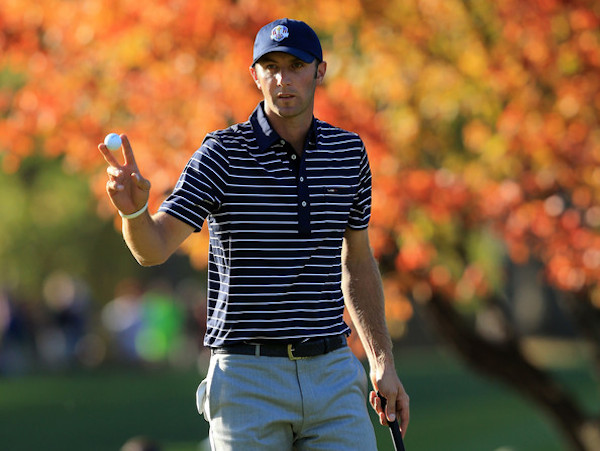

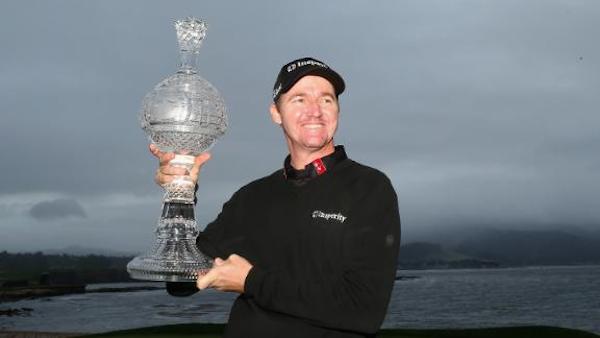
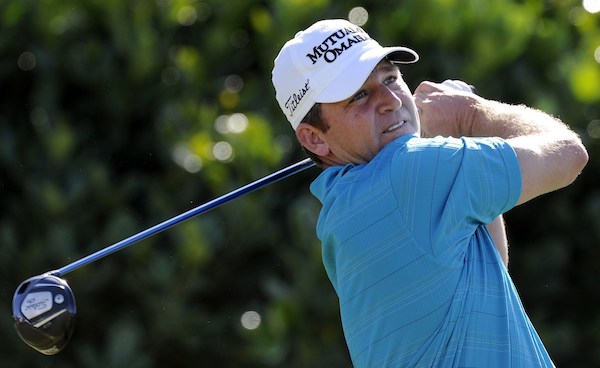
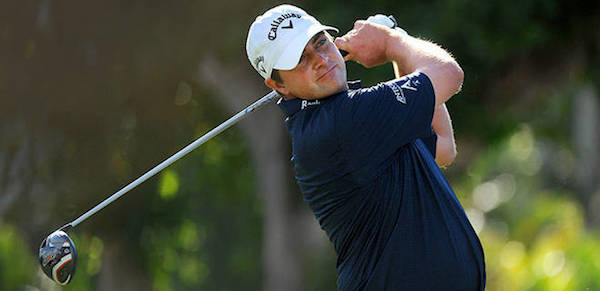


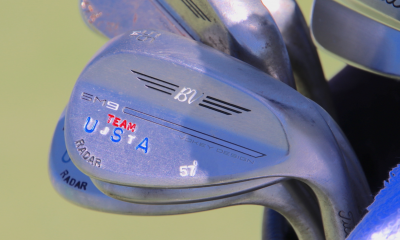

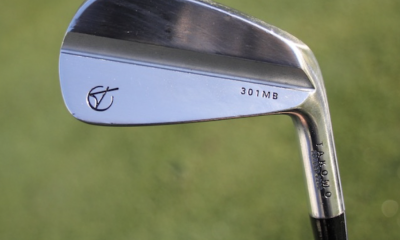

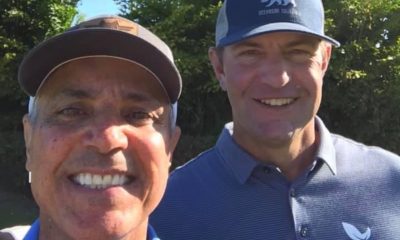




















PA PLAYA
Feb 11, 2014 at 5:50 pm
I couldn’t agree more with your thoughts about short game and putting. It has been, and will continue to be, the difference between winning and losing, especially in an event where it’s pretty much a given that just about every player on the team is at the very least a decent ball striker and wedge player.
Absolutely nothing against Ian Poulter, who single handedly turned the momentum against us in that final match Saturday afternoon at Medinah. He was the warrior who rallied the troops that evening, the catalyst for one of the most unbelievable comebacks in European RC history. You take away his ability to putt – he becomes just another run-of-the-mill Ryder Cupper. But those of us who’ve followed him over the past decade, those of us who pull for the Red White and Blue – he’s the one player we least want to see standing over a putt of any significance.
He’s fearless. He’s fearless because he knows that despite giving up 25+ yards off the tee, he can still get the ball into the hole in fewer strokes than his opponents in this event.
Not that team chemistry and all of these other performance aspects aren’t important, but if you don’t have a few great putters on your team who know no fear – you’re probably not going to win very often. It’s tough to find seasoned veterans who aren’t afraid of missing putts, and that pretty much describes all but one US Ryder Cup team over the past 15 years.
Mike H.
Feb 11, 2014 at 11:56 am
Finally someone else that thinks we need youth in the Ryder Cup. The last time the USA won they had a roster full of rookies. Yet we continually are told by the “experts” that you need experience on the team. The only “experience” some of these guys have is the experience of getting beat. It’s time to bring in guys like Spieth, English, and others.
Richie Hunt
Feb 11, 2014 at 3:10 pm
Thanks.
I think with youth the potential is that they may catch lightning in a bottle, much like the Euros did with some of their young players like Sergio and Olazabal. It also helps future teams because a young player may perform exceptionally well at one Ryder Cup and then not qualify for the next Ryder Cup and at least the captain can now consider that player based off their previous performance. Whereas if the young player is never selected, then in the next Ryder Cup it will be difficult for a captain to decipher if he’s worth picking or not.
The Europeans top-20 talent or so is pretty much event with the US top-20 talent. But the US Tour has an entirely deeper talent pool. It’s time that the US team and the people in charge start to try and use that deeper talent pool to their advantage.
IfIfIf
Feb 10, 2014 at 9:15 pm
http://www.youtube.com/watch?v=EnV8kpLotW4
10.00 and onwards….
Richie Hunt
Feb 10, 2014 at 8:23 pm
Thanks. I think the captains need to use statistics to best understand what format best suits the player and what players would likely work best together instead of pairing up players because they are friends. They also need to get every player playing on Day 1 if they can so they can figure out who is hot and who is cold, then ride the hot hands and keep the cold players on the sidelines. I think Furyk could have been a solid career Ryder Cupper if they kept him away from the Fourball format.
Brandel Chamblee
Feb 10, 2014 at 7:44 pm
Nice write up. I’m tired of watching the USA getting pounded by Europe as of late. The Ryder Cup reminds me of the movie miracle because USA puts out the best players even though the margin may be shrinking but we need to start putting out the right players. Pulter is the perfect example because he probably will never win a major but I would never bet against him playing Webb Simpson. USA needs more Keegan Bradley’s and Jordan spieths. I want to see tiger exclamation fist pumps. I love the energy and passion the Ryder cup brings. Furyk and Stricker are great players but I would rather have guys that are not afraid like Ricky fowler and don’t have the scars of previous cups. I love the money ball approach. Please do a follow up closer to the event and look at Europe as well if you can.
Teamer
Jul 9, 2014 at 4:32 pm
Fowler is right on. Corey Pavin thought so. How about his match play success, including Walker cup experience. He has fight and calmness not seen in to many of todays young players.